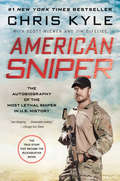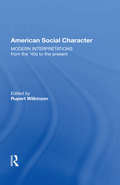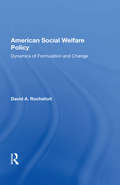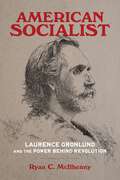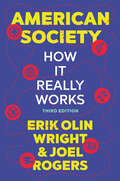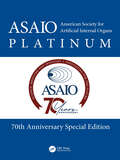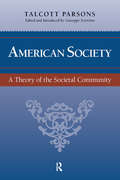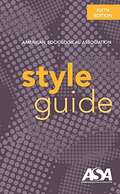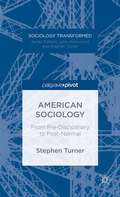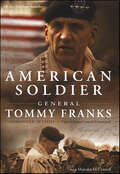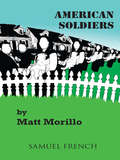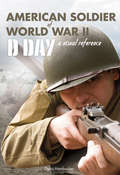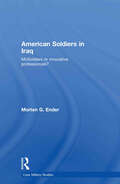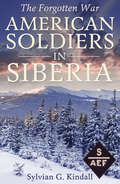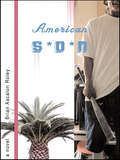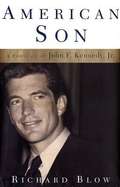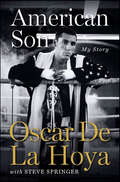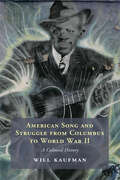- Table View
- List View
American Sniper: The Autobiography of the Most Lethal Sniper in U.S. Military History
by Jim Defelice Chris Kyle Scott Mcewen<P>He is the deadliest American sniper ever, called "the devil" by the enemies he hunted and "the legend" by his Navy SEAL brothers . . . <P>From 1999 to 2009, U.S. Navy SEAL Chris Kyle recorded the most career sniper kills in United States military history. <P>The Pentagon has officially confirmed more than 150 of Kyle's kills (the previous American record was 109), but it has declined to verify the astonishing total number for this book. <P>Iraqi insurgents feared Kyle so much they named him al-Shaitan ("the devil") and placed a bounty on his head. <P>Kyle earned legendary status among his fellow SEALs, Marines, and U.S. Army soldiers, whom he protected with deadly accuracy from rooftops and stealth positions. <P>Gripping and unforgettable, Kyle's masterful account of his extraordinary battlefield experiences ranks as one of the great war memoirs of all time. <P>A native Texan who learned to shoot on childhood hunting trips with his father, Kyle was a champion saddle-bronc rider prior to joining the Navy. <P>After 9/11, he was thrust onto the front lines of the War on Terror, and soon found his calling as a world-class sniper who performed best under fire. <P>He recorded a personal-record 2,100-yard kill shot outside Baghdad; in Fallujah, Kyle braved heavy fire to rescue a group of Marines trapped on a street; in Ramadi, he stared down insurgents with his pistol in close combat. <P>Kyle talks honestly about the pain of war--of twice being shot and experiencing the tragic deaths of two close friends. <P>American Sniper also honors Kyles fellow warriors, who raised hell on and off the battlefield. And in moving first-person accounts throughout, Kyle's wife, Taya, speaks openly about the strains of war on their marriage and children, as well as on Chris. <P>Adrenaline-charged and deeply personal, American Sniper is a thrilling eyewitness account of war that only one man could tell.
American Social Character: Modern Interpretations
by Rupert WilkinsonThis anthology features the writings of 17 important analysts of American character and culture. From 1945 to the present, this book includes selections by Charles Reich, Christopher Lasch, Philip Slater and many others. There is a general introduction to the subject and each selection is preceded by an introduction and followed by a critical comme
American Social Welfare Policy: A Pluralist Approach
by David Stoesz Howard Jacob KargerThis book attempts to provide the information necessary for the re-emergence of social work in social policy, nationally and internationally.
American Social Welfare Policy: A Pluralist Approach
by David Stoesz Howard KargerAmerican Social Welfare Policy: A Pluralist Approach, Brief Edition examines social welfare policy in the United States, and includes cutting-edge issues such as information on the 2008 presidential election, the economy, the housing bust, the passage of Proposition 8 in California, and much more. Teaching & Learning Experience Personalize Learning — MySearchLab delivers proven results in helping students succeed, provides engaging experiences that personalize learning, and comes from a trusted partner with educational expertise and a deep commitment to helping students and instructors achieve their goals. Improve Critical Thinking — Helps students sort out the major institutional actors within social welfare policy. Engage Students — Offers a user-friendly framework for policy analysis. Explore Current Issues — Information on Social Welfare Policy; the 2008 Election; Proposition 8; Economic issues. Apply CSWE Core Competencies — The text integrates the 2008 CSWE EPAS, with critical thinking questions and practice tests to assess student understanding and development of competency. Support Instructors — An Instructor's Manual and Test Bank, Computerized Test Bank (MyTest), BlackBoard Test Item File, MySearchLab with Pearson eText, and PowerPoint presentations are included in the outstanding supplements package.
American Social Welfare Policy: A Pluralist Approach (Fifth Edition)
by David Stoesz Howard Jacob KargerThis best-selling text for policy analysis provides students with a comprehensive overview of social welfare policy in the United States while examining cutting-edge issues.
American Social Welfare Policy: Dynamics Of Formulation And Change (Westview Special Studies In Public Policy And Public Systems Management)
by David RochefortSocial welfare activities stand at the heart of the modern democratic state as they absorb ever-increasing budget allocations and stimulate debate over the proper role of government. This study analyzes the development of social welfare policy in modern America, beginning with a critical assessment of the dominant "progressive and "social control t
American Socialist Triptych: The Literary-Political Work of Charlotte Perkins Gilman, Upton Sinclair, and W. E. B. Du Bois
by Van Wienen Mark W."A meticulously researched, highly informed, carefully argued, and very accessible account of American socialism, socialists, and socialistic thinking, from the late nineteenth century through the 1960s . . . challenges the intellectual and political legacy of Werner Sombart'sWhy Is There No Socialism in the United States?, whose spirit still hovers over animated discussions about the 'failures' of socialism in the United States. " ---James A. Miller, George Washington University "A valuable rethinking and reframing of the traditions of leftist literary scholarship in the U. S. " ---Sylvia Cook, University of Missouri, St. Louis American Socialist Triptych: The Literary-Political Work of Charlotte Perkins Gilman, Upton Sinclair, and W. E. B. Du Boisexplores the contributions of three writers to the development of American socialism over a fifty--year period and asserts the vitality of socialism in modern American literature and culture. Drawing upon a wide range of texts including archival sources, Mark W. Van Wienen demonstrates the influence of reform-oriented, democratic socialism both in the careers of these writers and in U. S. politics between 1890 and 1940. While offering unprecedented in-depth analysis of modern American socialist literature, this book charts the path by which the supposedly impossible, dangerous ideals of a cooperative commonwealth were realized, in part, by the New Deal. American Socialist Triptychprovides in-depth, innovative readings of the featured writers and their engagement with socialist thought and action. Upton Sinclair represents the movement's most visible manifestation, the Socialist Party of America, founded in 1901; Charlotte Perkins Gilman reflects the socialist elements in both feminism and 1890s reform movements, and W. E. B. Du Bois illuminates social democratic aspirations within the NAACP. Van Wienen's book seeks to re-energize studies of Sinclair by treating him as a serious cultural figure whose career peaked not in the early success ofThe Junglebut in his nearly successful 1934 run for the California governorship. It also demonstrates as never before the centrality of socialism throughout Gilman's and Du Bois's literary and political careers. More broadly,American Socialist Triptychchallenges previous scholarship on American radical literature, which has focused almost exclusively on the 1930s and Communist writers. Van Wienen argues that radical democracy was not the phenomenon of a decade or of a single group but a sustained tradition dispersed within the culture, providing a useful genealogical explanation for how socialist ideas were actually implemented through the New Deal. American Socialist Triptychalso revises modern American literary history, arguing for the endurance of realist and utopian literary modes at the height of modernist literary experimentation and showing the importance of socialism not only to the three featured writers but also to their peers, including Edward Bellamy, Hamlin Garland, Jack London, Edna St. Vincent Millay, and Claude McKay. Further, by demonstrating the importance of social democratic thought to feminist and African American campaigns for equality, the book dialogues with recent theories of radical egalitarianism. Readers interested in American literature, U. S. history, political theory, and race, gender, and class studies will all find inAmerican Socialist Triptycha valuable and provocative resource.
American Socialist: Laurence Gronlund and the Power behind Revolution
by Ryan C. McIlhennyRyan C. McIlhenny’s American Socialist is the first comprehensive biography of Laurence Gronlund (1844–1899), one of the nation’s most persuasive proponents of socialism. Gronlund cultivated a unique polemic against capitalism by advocating positions that synthesized Marxism with Darwinian evolution, rejected class violence, and emphasized cooperation over competition. According to McIlhenny, a belief in a divine force advancing history toward a “cooperative commonwealth” underpinned his philosophy. Gronlund’s books enjoyed a wide and dogmatic readership during the late nineteenth century, and his teachings inspired prominent Gilded Age figures, including Edward Bellamy, Leo Tolstoy, and Eugene V. Debs. American Socialist masterfully restores Gronlund to his place among the nation’s most important political thinkers.
American Society (Third Edition): How It Really Works
by Joel Rogers Erik Olin WrightThe definitive critical introduction to American society In American Society: How It Really Works, esteemed scholars Erik Olin Wright and Joel Rogers pull back the curtain on the complex inner workings of contemporary American society, revealing the ways in which it does—and doesn’t—support its core values. They also explore possible solutions to America’s most pressing social and economic problems, including poverty, health disparities, and the climate crisis. In addition to featuring the most recent data , this highly anticipated Third Edition offers new discussions of the Trump presidency, the COVID-19 pandemic, the decline of democracy, and the climate crisis.
American Society for Artificial Internal Organs (ASAIO) Platinum 70th Anniversary Special Edition
by Pramod BondeThis book celebrates two decades of groundbreaking research published in the ASAIO Journal, marking significant advancements in artificial organs and circulatory support.The American Society for Artificial Internal Organs ASAIO Platinum 70th Anniversary book is a compilation of 50 of the top papers published in the ASAIO Journal over the last two decades that have contributed to the evolution of the field. The book includes tables listing the Top 100- cited, viewed, and downloaded, articles from the ASAIO Journal. It also lists the Top 10 Altmetric Scores by Year, 2015-2024. Topics range from artificial vision for the blind, and control systems for blood glucose, to the development of an artificial placenta IV and engineering 3D bio-artificial heart muscle, and much more. This book represents early ideas and concepts, new treatments and devices that changed future clinical care and some early concepts that challenge the status quo. With contributions from leading experts, the ASAIO 70th Anniversary Book serves as a comprehensive resource for anyone interested in the forefront of artificial organ technology and its impact on improving patient outcomes.This book is intended for clinicians, scientists, engineers, and academics working for the advancement and development of innovative medical device technologies.
American Society: How It Really Works (Second Edition)
by Joel Rogers Erik Olin WrightThe authors identify five core social values that most Americans affirm in one way or another: freedom, prosperity, efficiency, fairness, and democracy and challenge the effectiveness of the same.
American Society: Toward a Theory of Societal Community
by Talcott Parsons Giuseppe SciortinoNever before published, American Society is the product of Talcott Parsons' last major theoretical project. Completed just a few weeks before his death, this is Parsons' promised 'general book on American society'. It offers a systematic presentation and revision of Parson's landmark theoretical positions on modernity and the possibility of objective sociological knowledge. Even after the passage of many years, American Society imparts a remarkably provocative interpretation of US society and a creative approach to social theory.
American Sociological Association Style Guide
by American Sociological AssociationThe sixth edition of the ASA Style Guide is the authoritative reference for writing, submitting, editing, and copy editing manuscripts for ASA journals and other publications following ASA's unique format. This revised, updated edition features guidelines for the most common situations encountered by authors and editors. New features include revisions to reference formatting and additional information on grammar, as well as expanded information on the use of electronic , digital, and social media sources. The sixth edition also includes guidance for online manuscript submissions, preprints, and updated reference examples. Coil binding. 163 pages, March 2019.
American Sociological Association Style Guide (Fifth Edition)
by American Sociological AssociationThe ASA Style Guide highlights and features guidelines for the most common situations encountered by authors and editors in the ASA journal publication process. It is designed to serve as the authoritative reference for writing, submitting, editing, and copy editing manuscripts for ASA journals. The Guide also serves a wider community of researchers, writers, and pub¬lishers who use it to prepare and present scholarly papers in other sociological and social science venues.
American Sociology: From Pre-Disciplinary to Post-Normal
by Stephen TurnerAmerican Sociology has changed radically since 1945. This volume traces these changes to the present, with special emphasis on the feminization of sociology and the decline of the science ideal as well as the challenges sociology faces in the new environment for universities.
American Soldier
by Tommy R. Franks Malcolm McConnellTo America, he was a hero.To his troops, he was a soldier.Now hear his story.Each new era in American history has given rise to a military leader who defines the nation’s proudest traditions—of leadership and honor, of vision and commitment and courage in the face of any challenge. From Washington and U.S. Grant to Dwight D. Eisenhower and Norman Schwarzkopf, these men have captured the nation’s imagination, and entered the small pantheon of
American Soldier
by Matt MorilloDrama / Characters: 3m, 2f / In American Soldiers, the patriarch of a politically prominent Long Island family fights to hold the family together when his eldest daughter, an Army veteran, returns from the Middle East for an uneasy homecoming. The girl, emotionally scarred from her military service, is struggling to take her ex-boyfriend and sister away with her to start a new life in Colorado. Her aim is to liberate them of the hometown influences of society, religion and class that led her to enlist. The play reveals the urge of children to break away, the power of family destiny and the emotional ties that bind. What is it about Nassau and Suffolk counties that makes them a breeding ground for "good little American soldiers," as Angela Coletti, the returning veteran, says? Her late mother had been a local Assemblywoman and her brother, Carlo Jr., is now running for a congressional seat. They are liberal politicians and "modern" Catholics, chastened by the wars of our time, who would seem to hold the old beliefs at arms' length. But to Angela, they are no more than cogs in a machine of conformity whose morals make no sense and who perpetuate dangerous myths. The force of her rebellion is set against the determination of her father, a Vietnam Veteran who is equally committed to holding the family together. His methods range from the good old fatherly temper tantrum to the kind of heart-to-heart with his soldier-daughter that only veterans can have. Through their tug of war, we witness the real forces that keep many of our young people fighting what Angela calls, "the same fight, generation after generation." It's the power of family and the hold of religion.
American Soldier
by Tommy FranksThe autobiography of General Tommy Franks. A look at the war on terrorism from someone who served on the frontlines as both a warrior and a diplomat.
American Soldier of WWII: D-Day, A Visual Reference
by Denis HambuckenOn June 6, 1944, 75,000 American men landed on the beaches of Normandy. The opening act in the liberation of Western Europe was the most ambitious military operation in history. This book provides an intimate look at soldiers' day-to-day experience through period equipment, weapons, and personal belongings. American Soldier of World War II provides a detailed look at the lives, weapons, and equipment of the soldiers who fought in the European Theater through a collection of artifacts and exacting reproductions. While other books examine World War II from a political, tactical, or military perspective, this book focuses on the day-to-day life and the human experience of the American men who fought and often gave their lives to defeat fascism. Illustrated with full-color photographs and historical documents, engagingly written and thoroughly explained, this book is the perfect addition to children's and adults' library collections, school libraries, and the personal libraries of history buffs of all ages.
American Soldiers in Iraq: McSoldiers or Innovative Professionals? (Cass Military Studies)
by Morten G. EnderAmerican Soldiers in Iraq offers a unique snapshot of American soldiers in Iraq, analyzing their collective narratives in relation to the military sociology tradition. Grounded in a century-long tradition of sociology offering a window into the world of American soldiers, this volume serves as a voice for their experience. It provides the reader with both a generalized and a deep view into a major social institution in American society and its relative constituents-the military and soldiers-during a war. In so doing, the book gives a backstage insight into the U.S. military and into the experiences and attitudes of soldiers during their most extreme undertaking-a forward deployment in Iraq while hostilities are intense. The author triangulates qualitative and quantitative field data collected while residing with soldiers in Iraq, comparing and contrasting various groups from officers to enlisted soldiers, as well as topics such as boredom, morale, preparation for war, day-to-day life in Iraq, attitudes, women soldiers, communication with the home-front, "McDonaldization" of the force, civil-military fusion, the long-term impact of war, and, finally, the socio-demographics of fatalities. The heart of American Soldiers in Iraq captures the experiences of American soldiers deployed to Operation Iraqi Freedom at the height of the conflict in a way unprecedented in the literature to date. This book will be essential reading for students of military studies, sociology, American politics and the Iraq War, as well as being of much interest to informed general readers.
American Soldiers in Siberia
by Sylvian G. KindallAmerican Soldiers in Siberia by U.S. Army officer Sylvian G. Kindall (first published in 1945), recounts his experiences as a member of the American Expeditionary Force Siberia from 1918 to 1920. AEF Siberia was involved in the Russian Civil War in and around Vladivostok at the end of World War I following the October Revolution. The futility and unpreparedness of the mission is apparent throughout the book, as is the author’s intense disdain for the Japanese troops, who were witnessed in repeated acts of violence against an unarmed citizenry. President Woodrow Wilson’s claimed objectives for sending troops to Siberia were both diplomatic and military: (1) rescue the 40,000 men of the Czechoslovak Legions, who were being harassed by Bolshevik forces as they attempted to make their way along the Trans-Siberian Railroad to Vladivostok; (2) to protect the large quantities of military supplies and railroad rolling stock that the United States had sent to the Russian Far East in support of the prior Russian government’s war efforts on the Eastern Front; (3) the need to “steady any efforts at self-government or self defense in which the Russians themselves may be willing to accept assistance.” At the time, Bolshevik forces controlled only small pockets in Siberia and Wilson wanted to ensure that neither Cossack marauders nor the Japanese military would take advantage of the unstable political environment along the strategically important railroad line located in this resource-rich region. For similar reasons, about 5,000 American soldiers were also sent to Arkhangelsk (Archangel), Russia by President Wilson as part of the separate Polar Bear Expedition.
American Son: A Novel
by Brian Ascalon RoleyA powerful novel about ethnically fluid California, and the corrosive relationship between two Filipino brothers.Told with a hard-edged purity that brings to mind Cormac McCarthy and Denis Johnson, American Son is the story of two Filipino brothers adrift in contemporary California. The older brother, Tomas, fashions himself into a Mexican gangster and breeds pricey attack dogs, which he trains in German and sells to Hollywood celebrities. The narrator is younger brother Gabe, who tries to avoid the tar pit of Tomas's waywardness, yet moves ever closer to embracing it. Their mother, who moved to America to escape the caste system of Manila and is now divorced from their American father, struggles to keep her sons in line while working two dead-end jobs. When Gabe runs away, he brings shame and unforeseen consequences to the family. Full of the ache of being caught in a violent and alienating world, American Son is a debut novel that captures the underbelly of the modern immigrant experience.A Los Angeles Times Best Book, New York Times Notable Book, and a Kiriyama Pacific Rim Prize Finalist
American Son: A Portrait Of John F. Kennedy, Jr.
by Richard BlowAt thirty-four, better known for his social life than his work as an assistant district attorney, John F. Kennedy, Jr. , was still a man in search of his destiny. All that changed in 1995, when Kennedy launched a bold new magazine about American politics, puckishly called George. Over the next four years, Kennedy's passionate commitment to the magazine and to the ideals it stood for transformed him. One witness to this transformation was Richard Blow, an editor and writer who joined George several months before the release of its first issue. During their four years together, Blow observed his boss rise to enormous challenges starting a risky new business, managing the pressures that attend a high public profile, and beginning life as a married man. With Blow as our surrogate, we see the many sides of Kennedy's personality: the rebel who fearlessly takes on politicians and pundits; the gentleman who sends gracious thank-you notes to his colleagues for their wedding gifts; the vulnerable son occasionally at odds with a mythic family legacy; the leader who stays true to his vision, no matter how difficult the circumstances. Simply and sympathetically, Blow offers an affecting portrait of a complicated man at last coming into his own sometimes gracefully, sometimes under siege, but never without the burden of great expectations.
American Son: My Story
by Steve Springer Oscar De La HoyaFrom Oscar De La Hoya, one of the most celebrated fighters in the history of boxing, comes a frank and touching memoir about achieving the American Dream: his rise to the top, the power of a solid work ethic, his mother's painful death from cancer, the pitfalls of stardom, and a very personal take on what it means to be an American The son of Mexican-born parents, Oscar "The Golden Boy" De La Hoya has had an astonishing career. From boxing to business, from the recording industry to the charitable accomplishments of his foundation, his success is a testament to what one can achieve in the United States. But who is this man who has changed the lives of so many? Who has imprinted a positive mark upon the sport of boxing, for which many have all but given up hope? Who has become a symbol of success for an entire community, without many heroes to call their own?American Son answers these questions.Born into a boxing family, De La Hoya has defeated more than a dozen world champions and won six world titles as well as an Olympic gold medal—a moment forever marked in the memory of anyone who has followed his career. Yet within the maelstrom of this success lay a man whose earnest belief in the goodness of everyone around him sometimes led him to stray far from his intended path. This book is The Golden Boy, and he bares his most heartbreaking mistakes as well as his most stunning triumphs for all of the world to see. This thrilling tale of an immigrant's son—a quintessentially American story—is the chronicle of an amazing journey that will provide readers with new insight into the private life of a figure who has to many reached iconic status.
American Song and Struggle from Columbus to World War 2: A Cultural History
by Will KaufmanLong before anyone ever heard of 'protest music', people in America were singing about their struggles. They sang for justice and fairness, food and shelter, and equality and freedom; they sang to be acknowledged. Sometimes they also sang to oppress. This book uncovers the history of these people and their songs, from the moment Columbus made fateful landfall to the start of the Second World War, when 'protest music' emerged as an identifiable brand. Cutting across musical genres, Will Kaufman recovers the passionate voices of America itself. We encounter songs of the mainland and the conquered territories of Hawai'i, Cuba, Puerto Rico, and the Philippines; we hear Indigenous songs, immigrant songs and Klan songs, minstrel songs and symphonies, songs of the heard and the unheard, songs of the celebrated and the anonymous, of the righteous and the despicable. This magisterial book shows that all these songs are woven into the very fabric of American history.
